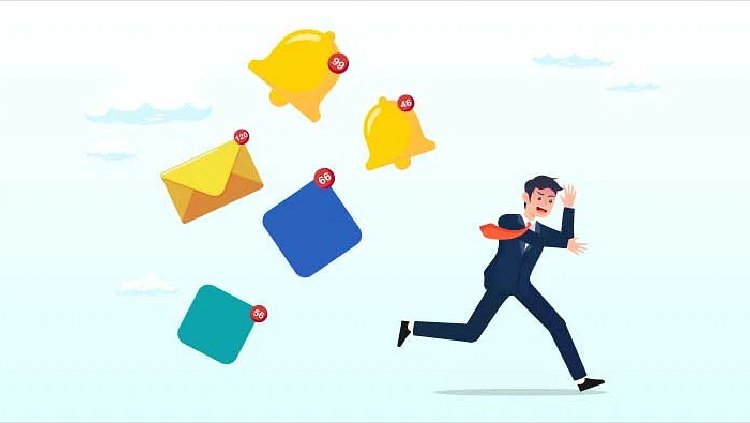Brands' Excessive Push Notifications: Crossing Limits in Customer Interaction Concerns?
Push Notification Strategy: Finding the Sweet Spot Between Value and Overwhelm to Retain User Engagement and Prevent Opt-Outs for Brands

In the realm of marketing, a fervent debate surrounds the deluge of push notifications inundating users. Concerns arise among marketers about the impact of excessive notifications on user experience. Jacob Joseph, VP of Data Science at CleverTap, notes a growing awareness among marketers about this issue. They seek insights into other brands' strategies and the optimal notification frequency.
What triggers this concern? Picture a leisurely Sunday morning where the desire for extra sleep clashes with persistent phone notifications. The incessant buzz interrupts tranquility, bombarding the user with an array of morning greetings, breakfast offers, and sales pitches from various brands. Paradoxically, what was meant to be a good morning becomes a barrage of interruptions, testing patience throughout the day.
An informal LinkedIn poll echoes this sentiment. Forty-seven percent express fatigue with brand notifications, while 46% advocate for fewer alerts. Only a meager 6% find the current volume acceptable. The question looms: are brands overshooting? Is there a lack of restraint?
Striking a Balance
Keyur Dhami, VP of Customer Success at WebEngage, acknowledges the necessity of user engagement while cautioning against overwhelming users with excessive notifications. He emphasizes the pivotal role of timing and relevance in optimizing their impact, tailored to the specific user base.
Experts emphasize a nuanced approach, emphasizing the importance of timing notifications when users are most receptive and aligning content with individual needs. Mitesh Kothari, Co-Founder and Chief Creative Officer at White Rivers Media, stresses value delivery over spamming.
Tailoring strategies to industry specifics, Siddharth Devnani, Co-Founder & Director at SoCheers, underscores the importance of user data in refining notification timing, even while adhering to general guidelines like refraining from nighttime alerts.
Consequences of Excessive Notifications
Joseph advocates aligning notification frequency with user intent. For example, continuous alerts to a user browsing for a product might be acceptable until the purchase is completed. Beyond that, they risk becoming a nuisance.
An anonymous agency head shared a distressing experience with incessant notifications from a healthcare app, leading to uninstallation due to excessive and insensitive promotional alerts.
Redefining Success Metrics
Kothari urges brands to move beyond mere click-through rates and delve deeper into conversion rates, revenue impact, and user retention. He emphasizes the need for notifications that drive action and provide genuine value.
Dhami suggests A/B testing for message efficacy and tag-based analytics for campaign organization. He emphasizes the importance of finding the right content and timing through these analytical approaches.
Not All Notifications Are Equal
Certain brands like Myntra, Netflix, Swiggy, and Google stand out for delivering thoughtful and appreciated notifications, setting an example of personalized and pertinent content.
While push notifications remain a cornerstone of customer engagement, the shift to sophisticated engagement techniques neglects foundational analytics and segmentation. Striking the right balance remains pivotal to avoid alienating users and driving retention.
In summary, the challenge lies in navigating the fine line between user engagement and annoyance, where strategic and value-driven notifications can yield long-term benefits for brands.

 Sumit Rawat
Sumit Rawat 










